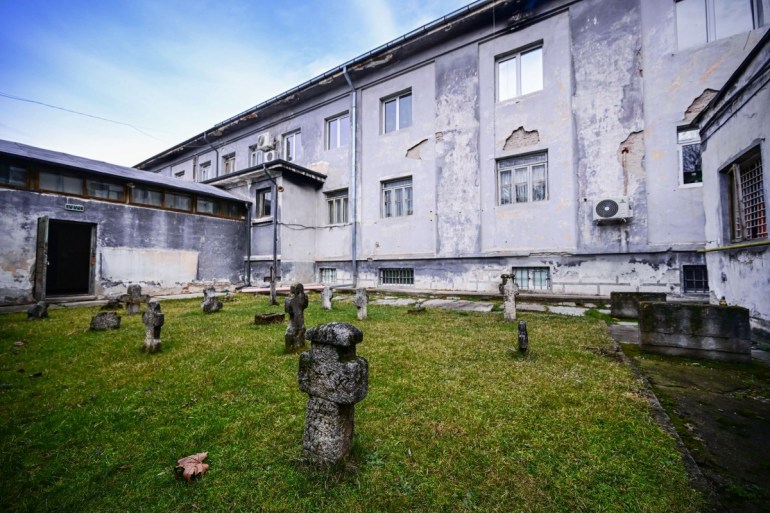[
Nikulina Moika felt the significance of historical past when she pushed open the rusted iron gate of the previous communist jail in Jilava, the place she was detained as a youngster.
In line with the Institute for the Investigation of Communist Crimes, Jilava is certainly one of 44 prisons and 72 compelled labor camps established to incarcerate greater than 150,000 political prisoners beneath Romania's communist regime (1945–1989).
Whereas some nonetheless operate as prisons, many buildings have been closed and demolished or left derelict.
“It's a pity, as a result of (Jilawa) is a spot the place you possibly can present the reality in regards to the communist interval. The best way the prisoners have been tortured, they have been saved in such poor circumstances, the meals, the chilly,” mentioned Moika, now 80.
For years she has been combating for Jilva to be was a museum earlier than the location deteriorates additional and is at risk of fading into oblivion.

“Whichever nation you go to, such locations may be seen. We allow them to separate,” mentioned Moica, who heads the Romanian Affiliation of Former Political Prisoners.
After dragging its toes for years, the Romanian authorities lately revived plans to have 5 former communist prisons listed as World Heritage Websites by the United Nations Academic, Scientific and Cultural Group (UNESCO).
Initially constructed as a protection fort across the capital Bucharest within the late nineteenth century, Jilava was later transformed into a jail and have become one of the crucial notoriously overcrowded prisons for political prisoners between 1948 and 1964. Went.
Prisoners have been saved in darkish and damp cells as much as 10 meters (33 ft) underground.
“It felt like getting into a gap,” Moika mentioned, remembering the Christmas Eve when she arrived in Jilava within the rain when she was 16. “I believed they have been going to shoot me.”
Convicted of involvement in an anti-communist group in 1959, Moica spent 5 years behind bars, together with a number of months in Jilava, about 10 km (six miles) exterior Bucharest.

To date solely two former communist prisons in Romania have been transformed into museums with the assistance of personal funding.
One in all them is Pitesti, which is a two-hour drive from Bucharest and certainly one of 5 websites proposed by UNESCO.
In the event that they grow to be heritage websites “nobody can dispute the significance of those locations”, mentioned Maria Axinte, 34, who began the challenge for the Pitesti Jail Memorial in 2014.
A whole bunch of images are everlasting proof of the torture of greater than 600 college students in Pitesti. A few of them have been later compelled to grow to be tyrants themselves.
Since final yr, Pitesti has been designated a historic monument and receives round 10,000 guests every year.
Indifference in direction of communism is growing in Romania amidst the ever-increasing disaster of survival. In a latest survey of 1,100 Romanians, 48.1 p.c answered that the Communist regime was “good for the nation”, a rise of three proportion factors from 10 years earlier.
Dozens of Romanians are additionally celebrating the birthday of late communist dictator Nicolae Ceaușescu.
Throughout her occasional talks on communism at native excessive colleges, Moika says, college students generally say to her: “Mother used to say that life was higher beneath communism.”
“Go ask your grandfather,” Moika replies, and tells him in regards to the “cursed cell” in Jilava that she nonetheless seeks out throughout each go to.
After leaving the previous jail, he nonetheless feels the need to take a shower.

